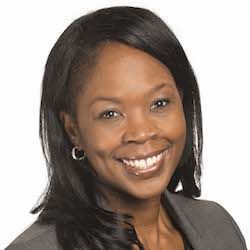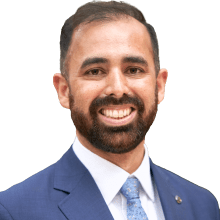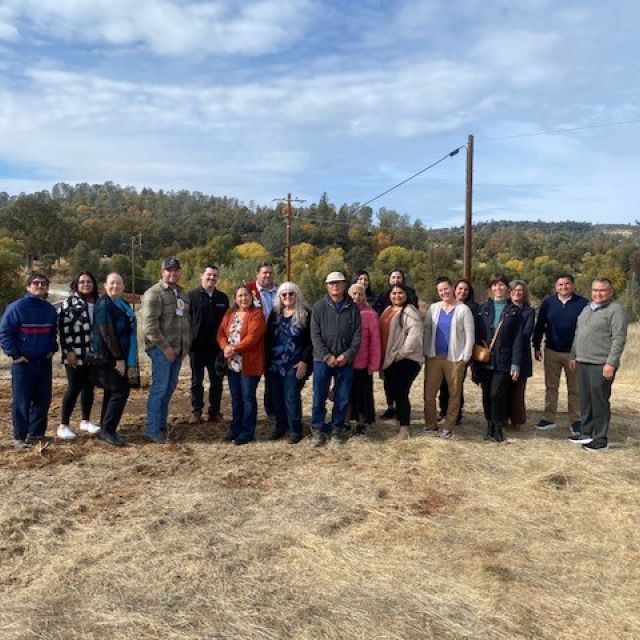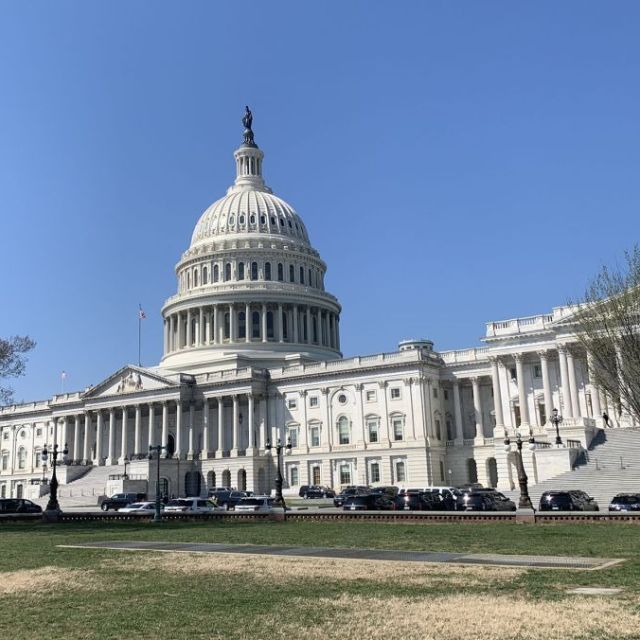Amid the groundswell of support for racial equity that took hold following the 2020 murder of George Floyd, Danielle Hammann and Matthew Singh got to work. Hammann, Enterprise’s vice president for investor relations, was busy closing a fund when investors started asking this question: What will Enterprise do as an innovator to address racial and economic inequality?
In the months that followed, Hamman and Singh – associate relationship manager on Hammann’s team – held brainstorming sessions among Enterprise colleagues and scoured research on the intersection of economic mobility and racial equity as they looked for a way to synthesize this collective expertise. They wanted to build on Enterprise’s Equitable Path Forward initiative – a five-year $3.5 billion effort designed to help dismantle racism in housing – and create a fund that would complement the broader strategy.
The result: Enterprise’s Equitable Upward Mobility Fund, a $190 million Low-Income Housing Tax Credit fund designed to support economic mobility with a focus on racial equity. The fund, which closed in March, aims to support developers of color to create more affordable homes in quickly gentrifying areas. It also invests in properties being developed by housing providers of color with a focus on helping residents achieve upward mobility with support from services. “Financial literacy classes, better digital access, job training and after school programs – providing these services is part of the fund’s strategy to help people rise above the situation they were born into,” Hammann said.
Hammann and Singh joined us to talk about how the fund came to be, and how they hope it will ultimately improve lives and communities.
What was the inspiration behind this fund?

Danielle: There was a huge focus on racial equity after George Floyd’s murder in 2020, as we all know. Enterprise’s Equitable Path Forward initiative to help dismantle racism in housing had recently launched.
We thought about this for months, and then at the end of 2021, once we closed our last multi-investor fund for the year, I was able to sit down and imagine if we were going to do a thematic fund, what would it look like? With input from the rest of our team at Enterprise, we came up with a roadmap. Then Matt helped to do the research to find out what metrics we could use. We wanted to advance racial equity, but also upward mobility so we worked to refine what the targeting criteria looked like.
Danielle mentioned you did a lot of research, Matthew, as the fund came together. How did this research inform the work?

Matthew: Part of the goal with this fund is that we wanted to add to the conversation in a way that was meaningful, and we wanted to reinforce Enterprise’s thought leadership position in the field.
For our research, we started with two books: one published by the St. Louis Federal Reserve and the other by the San Francisco Federal Reserve and Case Western. They are compilations of leading-edge research on upward mobility and mixed-income communities. That really helped to give a very up-to-date foundation and framework. That research combined with talking with all our experts across Enterprise – it was incredible to be able to tap into all that. The question was how do we synthesize this in a way that’s actionable for a fund?
We needed to take everything we knew and distill it into a few selection criteria for projects that we could operationalize at scale. We landed on four ways we’d look at projects:
- The first was whether the project was led by a BIPOC developer.
- Then, we went beyond that and looked at service enriched housing models that were evidence based. The clearest example of that is Larchmere Homes – which includes new construction of 30 affordable lease-to-purchase homes in Cleveland. Residents will lease 3-bed, 2-bath single family homes for up to 15 years. Then at year 15, residents have the option to purchase their home, typically for what is remaining in debt. It’s instant equity, and it’s a very inspired model.
- Thirdly, we took inspiration from research that Harvard economist Raj Chetty has done around upward mobility and focused on areas with high rates of upward mobility for individuals raised in low-income households.
- The last concept was hardest to define – you can think about it as how we identify neighborhoods experiencing gentrification. We wanted to make sure people who have been living in a neighborhood could stay there and benefit from new investment.
What does economic mobility mean to you? Can you define it?
Danielle: It means rising above the situation you were born into. It means achieving higher incomes, greater prosperity than your parents did. Being able to go to good schools, college, being able to get a good job even if you were born or grew up in low-income housing. Being provided those opportunities to improve your station in life.
Matthew: Different researchers will put it in different technical terms as well. Is it that you start in the bottom 20% of income and move to the top 20%, or is it the bottom half to the top 20%? There are different ways to look at it.
Danielle: When you have a project with a BIPOC developer, they are often working in neighborhoods where they grew up and they have a stake in the place. We also wanted to look beyond just the developer and make sure the tenants had the benefits. We wanted to incorporate a reserve for tenant services, whether it’s job training, after school homework, or high-speed internet, for instance.
How will the fund help to increase racial equity in housing?
Danielle: Keeping in mind fair housing laws, we looked at neighborhoods where these properties were located and considered the makeup through census tracts. We wanted to make sure this effort was to promote upward mobility for people of color, so we also looked at the census tract adjacent to see the makeup of those areas.
Matthew: And if a property was in an area with a lower proportion of people of color, there was the option to see if we could encourage the developer to use affirmative marketing and expand the marketing to be more inclusive.
When you’re supporting BIPOC developers, you’re supporting the community at large. It’s been documented that BIPOC-led firms tend to hire more people of color than their white-led counterparts. It’s community development in another form.
Two properties are emblematic of the fund: Fourteen02 South Park, a new apartment community in Madison, Wisconsin, and Larchmere Homes, in Cleveland, Ohio. What’s special about them and can their successes be replicated?
Matthew: At Fourteen02, the co-developers are Black-led (Rule Enterprises) and women-led (Movin’ Out). Rule Enterprises is part of Equitable Path Forward, which made them an automatic candidate for the fund. The deal leveraged Enterprise’s Standby Guaranty Facility – a financing vehicle available through EPF to help developers of color that might not meet traditional underwriting criteria. In this case, it helped them stand on a level playing field with their joint venture partner. That’s huge. We’re proud to highlight that work.
Danielle: Yes, also for Fourteen02, the neighborhood had a grocery store that recently closed – threatening to create a food desert. The development includes a new grocery store. With Larchmere, this is a model that the sponsor, CHN, has done throughout Cleveland and other areas and has been quite successful at it. About 90% of tenants have been able to go forward and buy their homes.
How will you gauge success for this fund and the impact it will have?
Danielle: The plan is to assess after five years and see how tenants are faring and whether neighborhoods are still prosperous. Ultimately, it’s about the people living there, and how they can improve their lives.
Matthew: Immediate impacts could be that someone got financial counseling and so they have a bank account. Longer term impacts could take place over decades, since the positive effects of living in high opportunity neighborhoods tend to accrue over time, and the impact is greatest for children raised in these environments.
I’d love to see the developers of color really grow their businesses too. It would be wonderful to see the Standby Guaranty Facility become something they don’t need anymore because they’ve established themselves.
I really like what Enterprise’s David Bowers said about working with BIPOC developers. Even if they are successful by traditional metrics, they will typically be less well capitalized than their white counterparts, so part of the underlying philosophy is just this: if the developer is walking, we help them run; and if they’re running, we help them run faster.

